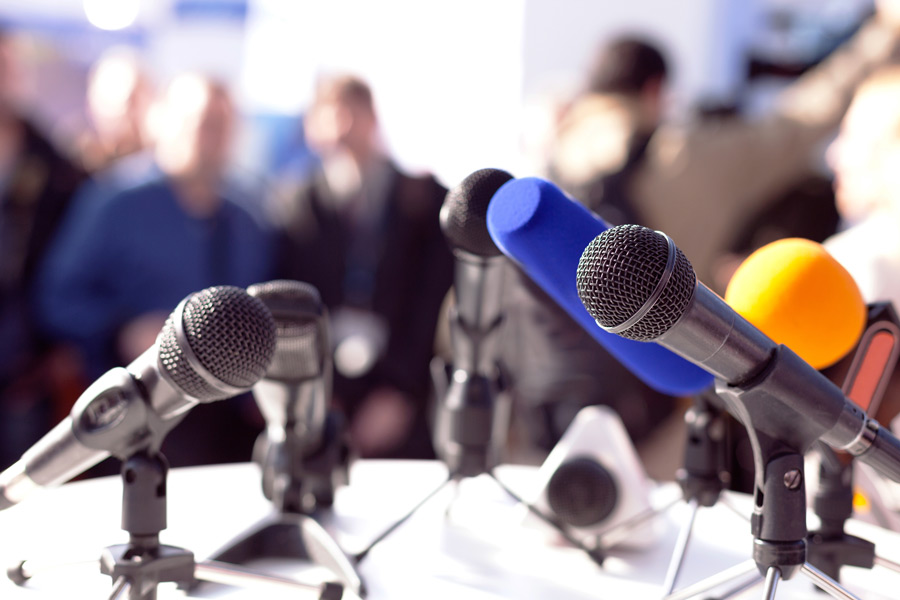The traditional press conference: reporters holding microphones; photographers and videographers with cameras; and writers scribbling on note pads and hitting record on their tape devices…
A press conference or news conference is defined as a media event in which newsmakers invite journalists to hear them speak and, most often, ask questions. Historically, politicians, sports teams, event organizers, private companies, and organizations (including police), hold them to get the information or news out all at once, to either garner additional publicity all at once, or to avoid having to speak to individual media outlets. In crisis situations, this order holds a special value because it offsets all critical questions at that exact moment.
But in our current environment, where bringing ten, 20 or more media contacts together in one place is frowned upon…what is a public relations professional to do (or rather advise their clients to do)?
- Introducing the Media Deskside.
For those unfamiliar with the term, a “deskside” is an in-person meeting with media at their office (or the client’s office). Some may say that the deskside is a practice of the past (i.e. like the faxed press release), but in a COVID-world, here are a few reasons why we believe media desksides are still relevant and useful today.
- It’s like a social distanced Press Conference.
Yes, a press conference could be considered more efficient. Share your announcement once and have it heard, recorded, etc. by multiple outlets all at once. But nowadays, that isn’t always feasible. So, with the deskside, you are inviting multiple media outlets to hear your message and giving them their own designated time and space. It makes the media feel important and safe – all at the same time. We recommend giving each outlet about 50-60 minutes to account for late arrivals, Q&A, photo opportunities, and even a little pre and post interview chatter. - Helps build long-term relationships.
In the world of Public Relations, half the battle is getting your e-mail pitch opened. If someone knows you and has met you in person (i.e. at a media deskside), they are more likely to open your e-mail. This is the first step to getting a positive media placement and building a long-term relationship. Let’s remember, PR is a communications-based industry, and nothing replaces the value of connecting in-person. - Allows you to control the messaging.
A media deskside gives you – the PR professional – the opportunity to be in control of the messaging. Press releases and pitches unfortunately can be interpreted different ways and taken out of context. When you are face-to-face with media, you are in the driver’s seat and can lead the discussion and clarify any questions or misconceptions about your client’s messaging and highlight the priority areas.
While I’m sure the big, crowded press conference will be back in no time, and already has made a return in some environments (socially distanced, with masks of course), now is a great time for PR professionals to take advantage of the current environment, and bring it back to basics: the one-on-one media deskside.
Take this opportunity of small group meetings to get to know your local reporters and media contacts, build your personal relationships, and work on your communication skills (as well as those of your client). When things return to normal, you just may end up with a few extra direct media contacts in your back pocket!

